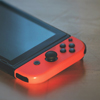Quarterly Journal Volume 52, Issue 2
In This Section
The Quarterly Journal is dedicated to presenting materials relating to intellectual property matters and is published four times per year. Editorial Board members (all of whom are lawyers) are selected based upon demonstrated interest and experience, and student staff members are selected from the students of the GWU Law School.
 QJ 52.2 - The European Unified Patent Court: Considerations Regarding the Court’s Approach to the Diverse Dimensions of the Innovation Ecosystem
QJ 52.2 - The European Unified Patent Court: Considerations Regarding the Court’s Approach to the Diverse Dimensions of the Innovation Ecosystem
Prof. Dr. Dana Beldiman & Dr. med. Dr. iur. Constantin Blanke-Roeser, LL.B.
On June 1st, 2023, the Unified Patent Court (UPC) commenced operations in Europe. This development is of major significance to the international patent world, as it establishes a single patent right for the majority of EU member states, along with the court system required to enforce it.
The implementation of the UPC, as well as the entry into force of the so-called Patent Package which sets forth the accompanying substantive and procedural law, crowns a 50-year period of efforts to harmonize patent law in Europe. While its original ambition of covering the EU in its entirety has not been achieved (so far), UPC and Patent Package constitute a major step forward in facilitating international patent protection and enforcement.
This article starts by describing the background of the UPC, along with an overview of the history and structure of the European Unitary Patent system as a whole and a discussion of the underlying Patent Package. We examine its organizational integration, legal classification, evolution and structure, as well as the UPC’s relationship to the European Court of Justice (ECJ), its jurisdiction and its Rules of Procedure (RoP). Next, the article examines several distinctive features of the UPC, including opting-out from its jurisdiction, bifurcation, injunctions, and the Court’s advances in digitization. The final segment provides a reflection on the Court’s stance vis-à-vis innovation. We ask whether the Court will view patents, narrowly, as a mere technical tool that grants an inventor market power, or alternatively, more comprehensively, as a property right, integrated into the overall legal and economic framework. A preponderance of large portfolio holders as litigants in the court, might provide a truncated view of the innovation ecosystem. We therefore consider whether smaller innovators might be reluctant to make use of the Court and how this situation can be remedied if the Court makes use of the interpretative latitude conferred by the Patent Package.
 QJ 52.2 - Wobbling Section 112(a) Standards and Their Impact on Antibody Patents
QJ 52.2 - Wobbling Section 112(a) Standards and Their Impact on Antibody Patents
Naoko N. Koyano
WOBBLING 35 U.S.C. § 112(A) STANDARDS AND THEIR IMPACT ON ANTIBODY PATENTS
The provision of 35 U.S.C. § 112(a) sets forth three requirements for a patent disclosure— written description, enablement, and best mode. The interpretation of section 112(a) has become an area of hot debate as applied to rapidly developing technologies such as biotechnology, pharmaceutics, and chemistry. Antibodies have unique diversity due to their biological process of formation and warrant special consideration with respect to enablement and written description requirements. The disclosure requirements of antibodies and antibody-related molecules have changed over time as the scientific understanding of antibody biology has advanced. Comparison of the recent approaches taken in the U.S., Europe, and Japan in cases related to Amgen Inc. v. Sanofi, 598 U.S. 594 (2023) shows global trend in limiting the scope of antibody patent protection, although the approaches and reasonings of each jurisdiction is different from each other. In the U.S., there are still remaining questions related to determination of enablement, including how to apply Wands factors to determine if “undue experimentation” is necessary to make and use the claimed invention and enablement requirement is satisfied. For future analysis of antibody cases using Wands factors, the author proposes to distinguish the inherent labor intensiveness of the biological research and ingenuity required in making and using the invention. In addition, how to decide the extent of patent protection, or “a ring of equivalence,” a disclosure of one antibody can provide needs to be defined.
 QJ 52.2 - From March Madness to Postgame Sadness: Leveling the Playing Field in Collegiate Athletics by Establishing a National Name, Image, and Likeness Policy
QJ 52.2 - From March Madness to Postgame Sadness: Leveling the Playing Field in Collegiate Athletics by Establishing a National Name, Image, and Likeness Policy
Emily Margolin
Until recently, the National Collegiate Athletic Association (“NCAA”) barred collegiate athletes from profiting off their name, image, and likeness (“NIL”). Though the NCAA has relaxed its stance and even adopted its own tentative NIL policy (albeit only after the Supreme Court all but required the NCAA to make such changes), there is no national standardization with regards to NIL regulation. Instead, it is left to each state to decide for itself whether to adopt an NIL policy at all and if so, what such laws should look like. To further complicate the issue, recent changes in the NCAA’s transfer rules have made it much easier for NCAA athletes to transfer between schools. The rapid liberalization of NCAA transfer policy coupled with the varying NIL policies across each state has led to a dramatic increase in the number of student-athletes who enter the transfer portal each year.
This Note balances the benefit of allowing student-athletes to profit off their own NIL with the issue of using the new transfer policies to “shop” schools based solely on NIL opportunities. In doing so, this Note proposes that the proper way to deal with these concerns is through federal legislation that both (1) sets up general guidelines for a national NIL policy and (2) establishes an NIL commission as part of the Department of Education that would shape and oversee collegiate NIL policy on an ongoing basis.
 QJ 52.2 - Nothing is Yours, Everything is Infringing: The Delicate State of Copyright in Video Game Livestreams
QJ 52.2 - Nothing is Yours, Everything is Infringing: The Delicate State of Copyright in Video Game Livestreams
Cashen Nielsen
The video game industry makes up possibly the largest, most lucrative sector of the entertainment. A significant portion of that industry, which has developed in recent years, includes player using platforms like Youtube and Twitch to stream themselves playing games. Related is the recent rise of competitive video gaming, or Esports, which is itself often streamed. Despite these industry developments, the copyright law overarching the industry has not changed significantly since the 1980s and mean that all of these livestreams are likely infringing the copyright of the game developers and publishers. This note argues that video game livestreams, particularly those of Esports, are a transformative use of the underlying video game that qualifies as fair use. It reaches this conclusion by applying the four-step fair use analysis to these streams, including the recent clarification of that test by the Supreme Court in Warhol v. Goldsmith. It also draws comparison to recent case law addressing copyright ownership in the output of software used to create characters for film and television to argue that the contributions of video game players to the gameplay footage they produce is significant enough to be a transformative use of the underlying game.
 QJ 52.2 - Battle in the Digital Sphere: The Repatriation of Digitized Native American Cultural Properties
QJ 52.2 - Battle in the Digital Sphere: The Repatriation of Digitized Native American Cultural Properties
Jiaying Jessie Zhang
BATTLE IN THE DIGITAL SPHERE: THE REPATRIATION OF DIGITIZED NATIVE AMERICAN CULTURAL PROPERTIES
As a part of the national decolonization effort, various federal statutes have played a significant role in repatriating what has been looted from the hands of Native Americans. However, returning a number of cultural artifacts to affiliated communities does not allow indigenous people in the United States to fully regain their lost knowledge and cultural expressions. Furthermore, the increasingly widespread digitization of cultural properties exacerbates the narrow repatriation requirements under current federal laws. Native American communities once again risk losing control and ownership over their cultural heritage, this time on digital platforms as opposed to their previous loss of physical possession. Congress should draft new repatriation legislation to close the gap that leaves digitized Native American cultural heritage wholly unprotected. This Note argues that the new legislation should maintain a balance between respecting cultural protocols and allowing public access to Native American cultural resources. This Note proposes such new legislation to be based upon rules extracted from copyright laws, information privacy laws, and other international standards.
Upcoming Events
-
.png?sfvrsn=9aa26827_1) 2026 AIPLA Virtual Corporate Practice Institute
2026 AIPLA Virtual Corporate Practice Institute
January 13 to 20, 2026 | Up to 360 Minutes of CLE
The Corporate Practice Institute is not a bootcamp. This program provides in-depth insight for in-house corporate counsel and agents to learn about wide ranging legal issues affecting their practice from experienced practitioners. It is designed for experienced in-house attorneys and new in-house attorneys learning to manage new corporate environments and challenges not taught in law schools or private practice. The Institute also helps private practice attorneys, especially associates, prepare for potential in-house career moves. The program also provides valuable networking opportunities to connect with each other and learn from each other's experiences. This online, CLE-program spans two half-days, from Noon – 5:00 pm Eastern and includes 3 one-hour education sessions and a networking session each day. -
 AIPLA CLE Webinar: Regulation, Risk & Resilience: The Nexus Between Professional Liability, Duty of Competence & Practitioner Well-Being
AIPLA CLE Webinar: Regulation, Risk & Resilience: The Nexus Between Professional Liability, Duty of Competence & Practitioner Well-Being
February 10, 2026 12:30 PM to 2:00 PM | Eligible for up to 90 Mins CLE
Mental health issues and substance use disorders can affect any practitioner, in any setting, and at any time. Left untreated, they can destroy careers and lives. This program will discuss where the legal profession currently stands in relation to the substantial challenges presented by untreated mental health issues and substance use disorders and examine the nexus between ethical competence under the USPTO Rules of Professional Conduct and practitioner well-being. This program will educate attendees on how to recognize the signs of an impaired attorney, how to approach the colleague and begin a conversation, and discuss the possible disciplinary and professional liability implications of an impaired practitioner’s conduct. In addition, the speakers will present best practices/effective risk management strategies, preventative measures, and proposed policy and well-being initiatives, that practitioners in any practice setting may implement to protect clients, themselves, and other firm members as well as save careers. -
.png?sfvrsn=fb5905da_1) 2026 IP Transactions Bootcamp
2026 IP Transactions Bootcamp
February 12, 2026
This in-person bootcamp is designed to provide practical insights and strategies for professionals working in intellectual property transactions. The day features a comprehensive agenda including: Panels and CLE Sessions: Learn about Working with Tech Transfer Offices, Strategies for successful collaborations between nonprofits and industry, and Protecting and monetizing an AI asset. Drafting and Negotiating Tips: Get practical advice on drafting and negotiating strategic collaboration and license agreements. Hands-on Workshop: Participate in a Mock licensing negotiation to put your skills to the test. Networking: Conclude the day with a dedicated Networking reception. -
2026 Patent Prosecution Boot Camp - Arlington, VA
March 4 to 6, 2026 | Up to 1235 minutes, including 60 Ethics minutes
The 2026 Patent Prosecution Boot Camp is a comprehensive, CLE-accredited seminar that includes instructional lecture-style sessions with practical tips on U.S. and international patent preparation and prosecution, as well as hands-on interactive workshops that will walk you through drafting claims and responding to office actions. -
-(1).png?sfvrsn=7a1054_1) 2026 Trade Secret Summit
2026 Trade Secret Summit
March 26 to 27, 2026
The AIPLA Trade Secret Summit is the leading trade secret conference in the nation, with speakers from across the spectrum of private practitioners, in-house counsel, government, and academia, as well as fantastic networking opportunities. CLE credits will be available.

